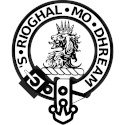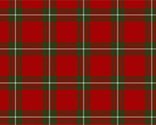Macgregor Clan Origin: The history of the Macgregors or Gregors is one fraught with defiance and conflict, beset by events that have made the clan one of the most colourful in all of Scotland. The clan motto of ‘my race is royal’ is a reference to claims of descent from Giogar, son of the first king of Dalriada. While these claims have proved difficult to substantiate, what can be said for the MacGregors is that they held lands in Argyll and Perthshire and held a longstanding feud with the neighbouring family, the Campbells.
Hugh of Glenorchy is thought to be the first clan chief (as we understand the term today) and, under the leadership of Malcolm, the Macgregors faithfully supported the title claims of Robert the Bruce. As part of the Wars of Independence, Malcolm fought alongside Bruce at the pivotal Battle of Bannockburn in 1314 and joined Edward Bruce’s detail in Ireland, which the king had hoped to capture for reasons of strategic importance and keeping his impetuous brother occupied. The campaign faltered and at Dundalk Malcolm MacGregor was badly wounded leaving him with the moniker, ‘the lame lord’.
Clan Location: Argyll
MacGregor Clan Motto: Royal is my race (‘S Rioghal Mo Dhream)
Decline, Violence and Prohibition: Despite this show of royal support, relations between Clan MacGregor and the Crown were, for the most part, thereafter strained. During the reign of David II, the MacGregors lost their claim over Glenorchy to the Campbells (a claim they would violently resist) and, later, in 1390, were forced to sell the lands of Auchinrevach to their burgeoning adversary. The clan moved to Glenstrae around this time though were goaded into acts of violence by the Campbells. This was a pattern the Campbells operated under heavily as it allowed them to use the law against any offending clans, whose punishment typically involved the loss of land to the injured party. In this manner Glenlyon was seized at the MacGregors expense and granted to the Campbells. By the reign of James IV, the clan, while numerous, was largely unsettled and under pressure from legislation designed to limit the actions of its more volatile members. This pressure escalated in 1589 when MacGregors remorselessly killed the royal forester, John Drummond. Commissions of ‘fire and sword’ were issued against the clan by the Crown for the next three years. In 1603 the clan fought and beat a significantly larger group of Colquhouns at the Battle of Glen Fruin for the killing of two stray MacGregors. The clan found itself outlawed under King James VI subsequently. The MacGregor name was banned and its chieftain, Alasdair, was hanged in Edinburgh in 1604.
The MacGregor Family Crest |
Clan MacGregor Tartan |
Fleeting MacGregor revival: Following the prohibition of the MacGregor name, a restriction which was lifted in 1774, the ‘Children of the Mist’ increasingly took up surnames such as Murray, Graham, and Stewart. Those who did not faced the threat of death by the hand of any assailant – legal authority or otherwise – who was immune to prosecution for their deed. Numerous MacGregors sought a hasty departure abroad following this ruling. Clan Campbell’s chieftain, acting as Earl of Argyll, deceived such men by guaranteeing safe passage for those MacGregors passing through his territory before arresting the unfortunate souls and handing them over to authorities to be put to death. Yet in spite of persecution MacGregors did not vanish from history at this time. During the Wars of the Three Kingdoms, MacGregors supported a king (Charles I) who had maintained the policy of his predecessors. Their support for James Graham’s royalist rising saw them pitted against their Campbell adversaries who supported the Covenanting regime. Their loyalty was rewarded with the Restoration in 1661 by Charles II, with those persecuting acts annulled, only to be reinstated following the Revolution of 1689, in which William of Orange and Mary Stuart wrested the crown from James VII. In the subsequent Jacobite risings of 1715 and 1745 MacGregors were prominent fighting for the cause of James VIII and Charles III/ ‘Bonnie Prince Charlie’ (or, as they were dubbed, the Old and Young Pretenders). Particularly in the lost cause of the latter claimant, the MacGregor chief, Robert, sacrificed much mortgaging what lands he possessed and refusing tempting offers to defect. With the Jacobites defeat at Culloden, Robert was imprisoned and the Duke of Cumberland’s discriminate rampage through the Highlands fell hard on the MacGregors.
Famous MacGregors
Rob Roy MacGregor: As with many clans, the MacGregors chiefs increasingly became men of distinction as the Highland way of life went through significant change throughout the next few centuries. Yet, what remains remarkable is how the clan survived nearly two centuries of outlaw status. It is perhaps fitting then that the MacGregors’ most illustrious figure should be that of the legendary Rob Roy MacGregor (1671 – 1734) , a man noted for his defiant ‘rouge’ streak and for holding an irrepressible grudge. In him, much of the MacGregors’ history is characterised and his personal tale says much about why the MacGregors hold a particularly special place within the history of Scotland’s clans. Immortalised in stories, statues and film where ever you go in & around the Loch Lomond & Trossachs National Park you will find reference to Rob Roy MacGregor. This statue can be found at the foot of Stirling Castle. Rob Roy is now buried in the family grave in Balquhidder.
Are you a MacGregor?
If your surname is listed below you can claim to be a MacGregor.
| Caird | Leckie | Macgrewar |
| Comrie | Lecky | MacNee |
| Fletcher | MacAdam | MacNeish |
| Gregor | Macara | MacNie |
| Gregorson | Macaree | MacNish |
| Gregory | MacChoiter | MacPeter |
| Greig | Maccrouther | Malloch |
| Grewar | Macgrowther | Neish |
| Grier | Macgruder | Nish |
| Grierson | Macgruther | Peter |
| Grigor | Macilduy | White |
| Gruer | MacLeister | Whyte |
| King | MacLiver |


